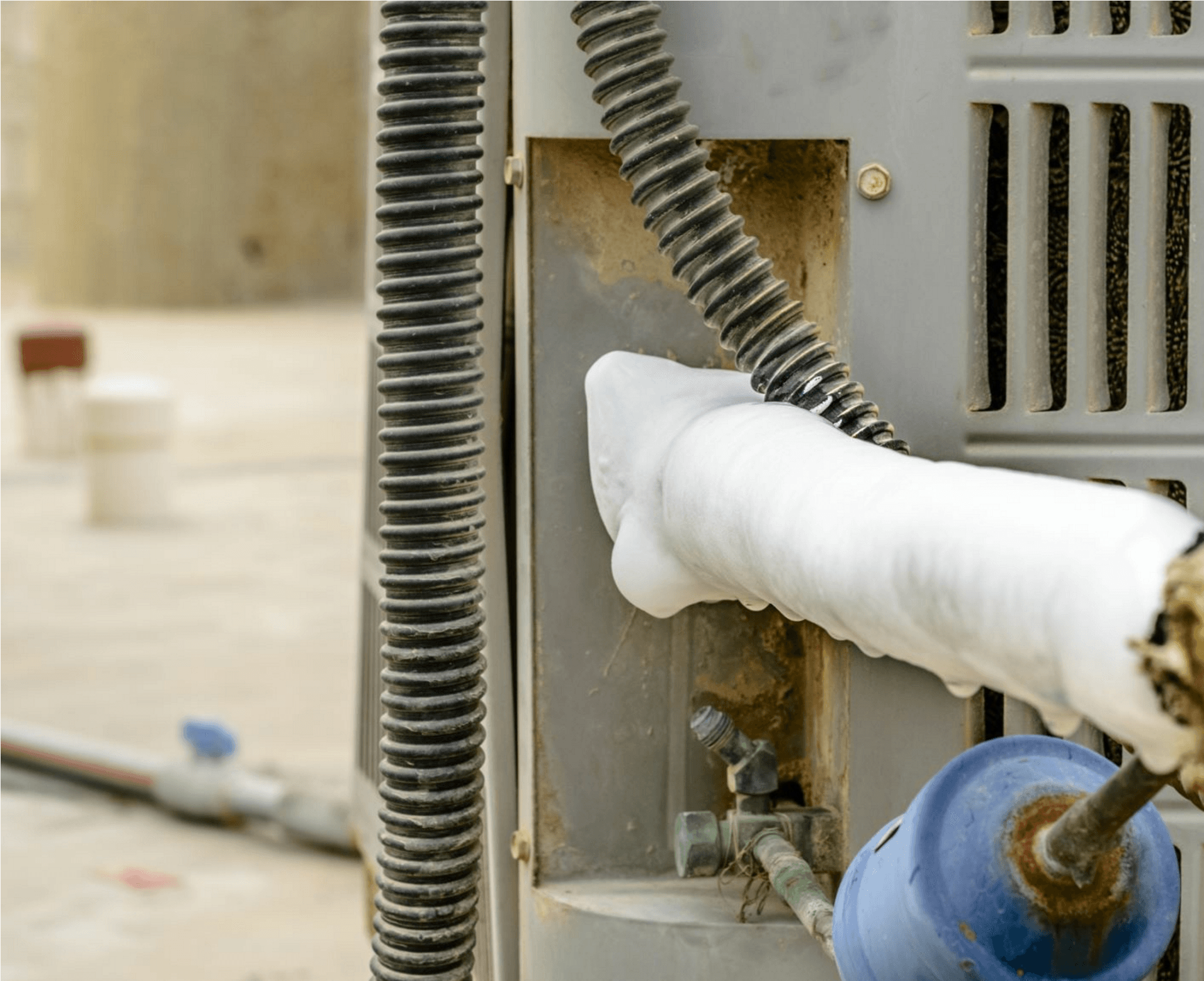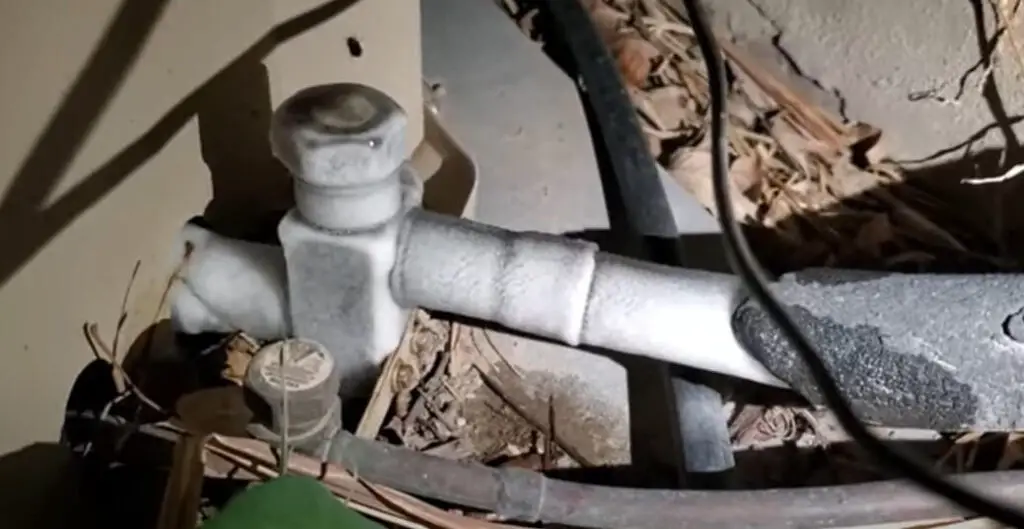My AC Pipe Is Frozen - What Do I Do? Guidance for Homeowners
My AC Pipe Is Frozen - What Do I Do? Guidance for Homeowners
Blog Article
Right here down the page yow will discover a good deal of extremely good insights concerning What Causes AC Pipes To Freeze?.

Intro
Finding that your air conditioning pipe is iced up can be worrying, particularly throughout warm summer season when you rely on your air conditioning unit one of the most. Understanding what to do in such a situation is vital to prevent additional damages to your air conditioning system and ensure your comfort inside.
Understanding the Causes
Numerous elements can add to the cold of an AC pipeline. Recognizing these causes can help you attend to the problem properly.
Lack of Airflow
One typical root cause of a frozen air conditioning pipeline is inadequate airflow. When the airflow over the evaporator coil is restricted, it can cause the coil to go down below freezing temperature level, causing ice development on the pipeline.
Reduced Refrigerant Levels
Not enough cooling agent degrees in your air conditioning system can also lead to a frozen pipe. Reduced refrigerant degrees can cause the pressure in the system to go down, causing the cold of wetness on the evaporator coil.
Cold Weather Conditions
In cooler environments, freezing temperatures outside can contribute to the cold of AC pipelines. If your air conditioner system is not correctly shielded or if there are leakages in the ductwork, cold air can infiltrate the system, causing the pipeline to freeze.
Dirty Air Filters
Filthy or clogged air filters can limit air movement in your AC system, resulting in numerous problems, including an icy pipe. It's necessary to replace or clean your air filterings system frequently to make certain appropriate air movement and stop ice buildup.
Signs of a Frozen AC Pipe
Recognizing the signs of a frozen AC pipe is essential for prompt action.
Lowered Airflow
If you see a substantial reduction in air flow from your vents, it can show an icy pipeline.
Ice Buildup on the Pipe
Noticeable ice build-up on the cooling agent line or the evaporator coil is a clear indication of a frozen air conditioning pipe.
Unusual Sounds from the Unit
Unusual noises, such as hissing or bubbling, originating from your air conditioner device can signify that there's ice existing on the pipeline.
Immediate Actions to Take
When faced with a frozen AC pipe, it's essential to act promptly to prevent further damage to your cooling system.
Turning off the AC
The initial step is to turn off your air conditioner to stop the system from running and aggravating the concern.
Checking for Blockages
Examine the area around the interior system for any obstructions that may be obstructing air flow, such as furniture or curtains.
Defrosting the Pipe
You can utilize gentle approaches like positioning towels soaked in warm water around the icy pipeline to assist thaw it slowly.
Safety nets
Taking safety nets can assist avoid future events of a frozen air conditioner pipeline.
Regular Maintenance Checks
Set up normal maintenance contact a specialist HVAC specialist to make sure that your a/c system is running efficiently.
Transforming Air Filters
Routinely replace or clean your air filters to avoid air flow restrictions and maintain optimal efficiency.
Protecting Exposed Pipes
If your air conditioner pipes are revealed to cold temperature levels, consider protecting them to stop cold throughout cold weather.
Looking For Professional Help
If DIY methods fail to solve the problem or if you're unclear regarding how to proceed, it's ideal to look for aid from a qualified HVAC technician.
When DIY Methods Fail
If your efforts to thaw the pipeline or address other issues are unsuccessful, it's time to employ a professional.
Significance of Hiring a Professional HVAC Technician
A qualified HVAC service technician has the competence and tools needed to detect and fix problems with your air conditioner system securely and effectively.
Final thought
Taking care of a frozen a/c pipeline can be a discouraging experience, yet recognizing how to react can assist reduce damages and bring back comfort to your home. By understanding the reasons, acknowledging the signs, and taking punctual action, you can properly address the issue and prevent future occurrences.
What to Do If Your AC Line Is Frozen
Make Sure All Supply and Return Air Vents Are Open
If you notice problems with airflow, the first thing you should do is check your supply and return vents. Supply vents distribute clean, conditioned air throughout your home. As this air becomes stale, it’s pulled into the return vent, where it’s reconditioned before being sent back out through the supply vent.
When these vents are closed, air won’t flow in the home. Before examining your AC, check the vents in every room and ensure they’re all open.
Check for a Dirty Air Filter
Another possible cause of limited airflow is a dirty air filter. Your air conditioner’s filters catch elements you don’t want to breathe in, such as dirt and dust. Over time, filters can become clogged, ultimately blocking air from flowing in and out. The lack of airflow can then cause the entire coil to freeze and will completely restrict any air from moving through it. The AC may need to be powered off for one to two days to allow the coil to thaw after replacing the filter to allow proper functioning of the unit. This debris can also accumulate on your AC’s evaporator coil, requiring a more serious repair. In general, air filters should be cleaned regularly (about every two weeks).
Assess Your Outdoor Unit
In addition to checking your AC, assessing the outdoor unit is a good idea. Also known as the condensing unit, it works with your interior unit to release heat outside. An issue with the outdoor unit can result in rising internal temperatures.
Overgrown Shrubs or Clogged Leaves
From leaves and twigs to shrubs and debris, there’s no shortage of outdoor elements that can accumulate around your condensing unit. When these elements get lodged inside the unit, they can block airflow. Fortunately, removing the blockage can solve the problem.
Sounds of a Broken Fan
Shrubs and leaves aren’t the only things that can impede your outdoor unit’s airflow. If the fan is broken, the unit won’t be able to properly get rid of heat — which means the internal temperature won’t go down. First, make sure the fan is spinning. If it is, check for the following sounds of a broken fan:
Buzzing Rattling Screeching Hissing Clicking Preventative Measures
Nobody wants to deal with a frozen AC line. In addition to causing problems with your air conditioner, they require professional repairs. On the bright side, there are preventative measures you can take to help ensure this issue doesn’t arise in the first place.
https://www.coopergreenteam.com/blog/what-to-do-if-ac-line-frozen

I'm just very drawn to How can I fix an air conditioner’s frozen pipe? and I hope you liked the new piece. Do you know about somebody who is in to the topic? Why not promote it. Kudos for your time. Visit again soon.
Schedule Now Report this page